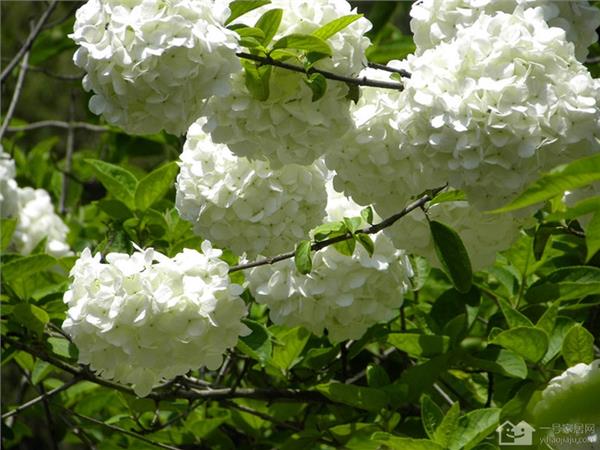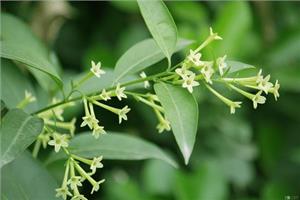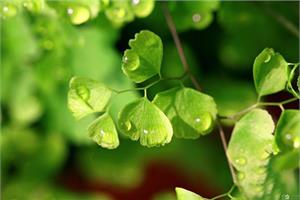How to cultivate the cultivation techniques of Qionghua
Qionghua is covered with treasures, both flowers and fruits have its role, so do you know how to cultivate Qionghua, what its cultivation techniques are, and what are the morphological characteristics of Qionghua? let's take a look.

1. Cultivation techniques of Qionghua
1. Humidity management
I like a slightly moist to dry climate.
2. Temperature management
Hardy. It is difficult to spend the summer in the period of high temperature in summer, and you can't stand the muggy heat, otherwise you will enter a semi-dormant state and your growth will be hindered. The most suitable growth temperature is 15-30 ℃.
3. Lighting management
Like the semi-shade environment, but after keeping it indoors for a period of time, you should move it to an outdoor shaded place for a period of time (about a month), so alternately. Put in indoor maintenance, as far as possible in places with bright light, such as well-lit living room, bedroom, study and other places, but to avoid direct sunlight to it. In early spring, late autumn and winter, because the temperature is not very high and the sun is not strong, it can be exposed to direct sunlight in the morning and evening.
4. Fertilizer and water management
Like the dry or slightly wet state of the pot soil, but its roots are afraid of water stains. If there is water in the flowerpot, or if it is watered and fertilized too frequently, it will easily cause rotting roots. The principle of watering it is "dry and wet, dry and thoroughly dry, and if you don't dry or water it, you will water it thoroughly."
5. Spring and autumn
These two seasons are its peak growing season. Fertilizer and water management circulates according to the order of "Huabao"-- clear water-- "Huabao"-- clear water. The interval period is about 1-4 days for outdoor maintenance, and the interval period is shorter during sunny days or high temperature periods. The interval period is longer or not watered during rainy or low temperature days. Keep it indoors for 3-6 days, with shorter intervals during sunny or high temperatures, longer intervals or no watering during rainy or low temperatures.
6. Summer
In the summer high temperature period, it grows slowly and does not require much fertilizer and water, so it needs moderate fertilizer and water control. Fertilizer and water management circulates according to the order of "Huabao"-clear water-clear water-"Huabao"-clear water. The interval period is about 1-3 days for outdoor maintenance, shorter interval period during sunny or high temperature period, longer interval period or no watering during rainy or low temperature period. Keep it indoors for 3-5 days, with shorter intervals during sunny or high temperatures, longer intervals or no watering during rainy or low temperatures.
7. Winter
The plant grows slowly in winter, mainly to control fertilizer and water. Fertilizer and water management circulates according to the order of "Huabao"-clear water-clear water-"Huabao"-clear water-clear water, the interval period is about 4-8 days, the interval period is shorter during sunny or high temperature, and the interval is longer or not irrigated during rainy or low temperature. Watering time is arranged as far as possible when the temperature is high at noon on a sunny day.
Second, the morphological characteristics of Qionghua.
Qionghua is a deciduous shrub with a height of 2 to 3 meters. Branchlets, petioles and peduncles are glabrous. Under the leaves, there are only clustered hairs in the vein axils or sometimes there are a few long hairs on the veins.
Qionghua bark dark grayish brown, with longitudinal stripes and cork layers; branchlets brown to reddish brown, with distinct stripes. Leaves dark green, simple leaves opposite; ovate to broadly ovoid, 6-12 Mimi long, 5-10 cm wide, usually shallowly 3-lobed, base rounded or truncate, with palmately 3-veined, lobes spreading slightly outward, middle lobe longer than lateral lobes, apex all acuminate or protruding, margin with irregular large teeth, yellowish green above, glabrous, lower light green, vein axils hairy; petiole stout, glabrous, glandular near end.
The above is the relevant introduction of this article, I believe you have a simple understanding of this after reading it, if necessary, you can continue to pay attention to the No. 1 home network for more information.
- Prev

The time of flowering of evening primrose is introduced by the breeding method of evening primrose.
The time of flowering of evening primrose is introduced by the breeding method of evening primrose.
- Next

Morphological characteristics of Dryopteris Dryopteris the four Seasons Management of Dryopteris Culture
Morphological characteristics of Dryopteris Dryopteris the four Seasons Management of Dryopteris Culture
Related
- Wuhan Hospital Iron Tree Blooming Result Was Instantly Frightened by the Gardener Master
- Which variety of camellia is the most fragrant and best? Which one do you like best?
- What is the small blue coat, the breeding methods and matters needing attention of the succulent plant
- Dormancy time and maintenance management of succulent plants during dormancy
- Minas succulent how to raise, Minas succulent plant pictures
- What are the varieties of winter succulent plants
- How to raise succulent plants in twelve rolls? let's take a look at some experience of breeding twelve rolls.
- Attention should be paid to water control for succulent plants during dormant period (winter and summer)
- Watering experience of twelve rolls of succulent plants
- Techniques for fertilizing succulent plants. An article will let you know how to fertilize succulent plants.

